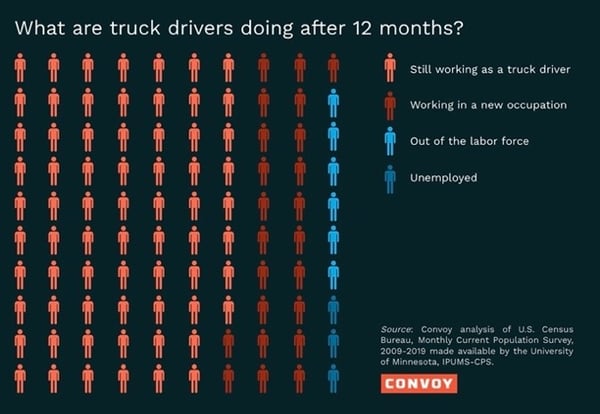Key Drivers of the Forecasted Freight Industry Evolution

Motor carriers move more than 50% of the world’s goods and transport over two-thirds of all freight throughout North America. Trucking is a pillar of the U.S. economy and an essential component of the American way of life. And yet, headlines of freight "bloodbaths”, flatlines and bankruptcies are increasing in frequency, and are causing many less-than-truckload, truckload, and even third-party logistics companies to question their longevity and the future of the ever-evolving transportation industry.
We’ve asked DDC freight operations experts who have over 15 years serving the nation's top carriers and 3PLs by streamlining business processes to dive into the four most influential forcing mechanisms driving the future of freight.
Four forcing mechanisms that are contributing to the evolution of the freight industry
1. Capacity against volume and a soft market
Changes in truck pricing, capacity, and demand signal bigger shifts in a softening market. Declining volumes due to unpredictable forces- like Coronavirus or a turbulent political climate - merged with the sharp loosening of capacity contributes to over-capacity in the market. According to Donna Kintop, Senior VP of Client Experience, “Two years ago, everyone had more freight that they knew what to do with” (watch her interview with FreightWaves' "What The Truck?!?" podcast below). However, in 2019, the tides changed, and the market began to soften. How the industry utilizes its resources to balance the capacity versus volume will continue to be one of the on-going challenges in the forefront of the industry as it continues to evolve.
2. Driver shortage
According to trucks.com, the typical age of truck drivers who exit the labor force because they are unable to work is 46. Yet, despite this, and a large portion of the driver pool nearing retirement, many carriers are becoming highly selective in hiring drivers because they have made safety and professionalism high priorities. While a progressive hiring practice, this has the potential to cause some major delays in the years to come.
If the industry continues the same trajectory, American Trucking Association research predicts the driver shortage will triple, to approximately 174,000 drivers, in the next seven years. To combat this, companies are investing into attracting a new generation of drivers. Freight Process Insight experts predict those truck companies will continue to devote time and resources to better benefits and driver-centric initiatives. That means increasing the number of local assignments so that drivers can stay closer to home, improved benefits, and more competitive pay.

3. E-Commerce
Increasingly we live in a society that values instant gratification, so it’s no surprise that significant changes in freight distribution are being driven by e-commerce. A substantial majority of shipments are still delivered by truck, but what’s noteworthy, is the increase in consumers wanting instant delivery.
Can carriers keep up? Kintop noted that “people are still trying to figure out the growth of the e-commerce market as companies like Amazon continue to build their own logistic s fleet.” Unfortunately, despite the best efforts of key players in our industry, only time will tell how online consumer demands and expectations will impact the market.
4. Technology
It’s hard for traditional freight forwarders to survive without any digitization plans. Companies are not only looking at new technology, but they’re taking the time to really understand the most practical way to adopt it.
Today’s data-intensive world poses both an opportunity and a challenge to LTL carriers and 3PLs let alone the entire transportation ecosystem. In order to survive (and thrive) in this market, companies must adopt progressive advancements that are also practical for their specific business models.
DDC's Auto-Extraction & Structuring solution leverages machine learning to take raw BOL data and cleanses and structures it based on your business rules within seconds of receipt, enabling you to process shipment data in real-time.
You can't do it alone. You need the right suite of technology to enable you. And you need the right support to help you discover your hidden opportunities for growth without insider bias. The future for freight may be unpredictable but your business plan doesn’t need to be.
Connect with Us
DDC FPO is a trusted strategic partner for transportation and logistics companies worldwide. Discover how we can help support your success.
How Can We Help You?
Get in touch to learn how we can support your success.
Get Started
